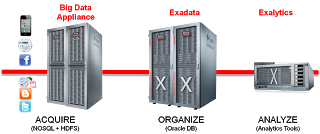Big data. It just keeps getting bigger. Why? Because top management’s attention is laser-focused on big data as the solution to many corporate problems. More actions at CIO Big Data summit at New York on first week of May'13.
Gartner Sales Performance Analyst Patrick Stakenas. “There’s no question that big data is the biggest trend in business intelligence, and it will remain that way for the foreseeable future. But it’s not just an IT issue. It’s a management issue. Relying too much on big data analytics risks losing the personal approach to selling.”
The huge stores of data that companies have accumulated haven’t added true value to the enterprise yet, because data requires context in order to be useful. Context includes a clearly articulated business strategy for using the data, an understanding of competitive shifts, an understanding of the market’s perceptions about your company and your products, and much, much more.
Gartner’s Laney says, for example, that social media is a great source of data and information about customers, but it can cause real problems for executives unless it’s put into context.
Even after all the data is collected and analyzed, there’s still one more pitfall to look for, adds Adam Sarner, Gartner’s big data and CRM analyst. “The successful big data project isn’t about collecting massive amounts of this data,” Sarner says. “It’s about making the right information accessible and action-oriented for the company and the customer for core CRM.”
Gartner Sales Performance Analyst Patrick Stakenas. “There’s no question that big data is the biggest trend in business intelligence, and it will remain that way for the foreseeable future. But it’s not just an IT issue. It’s a management issue. Relying too much on big data analytics risks losing the personal approach to selling.”
The huge stores of data that companies have accumulated haven’t added true value to the enterprise yet, because data requires context in order to be useful. Context includes a clearly articulated business strategy for using the data, an understanding of competitive shifts, an understanding of the market’s perceptions about your company and your products, and much, much more.
Gartner’s Laney says, for example, that social media is a great source of data and information about customers, but it can cause real problems for executives unless it’s put into context.
Even after all the data is collected and analyzed, there’s still one more pitfall to look for, adds Adam Sarner, Gartner’s big data and CRM analyst. “The successful big data project isn’t about collecting massive amounts of this data,” Sarner says. “It’s about making the right information accessible and action-oriented for the company and the customer for core CRM.”



